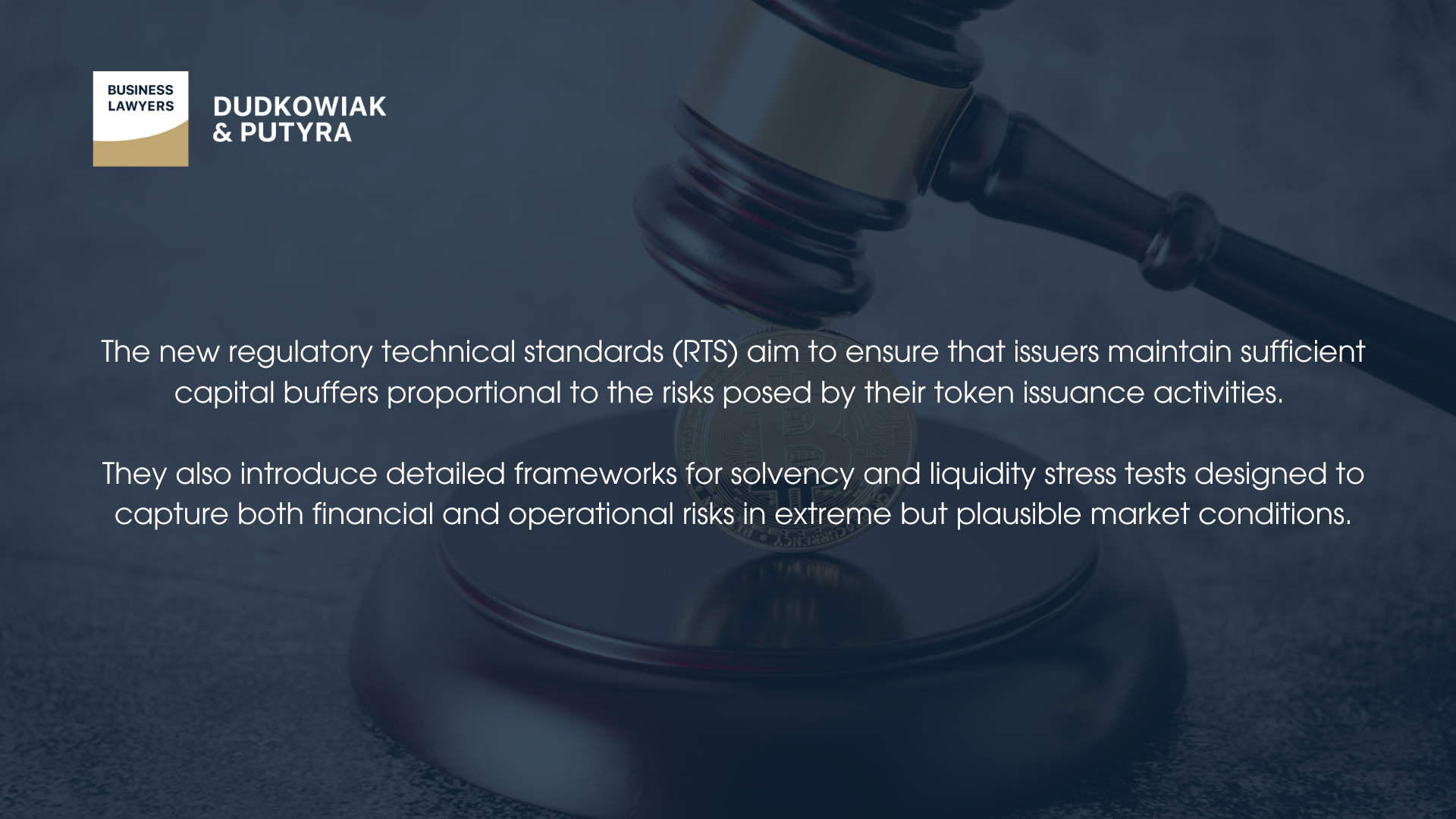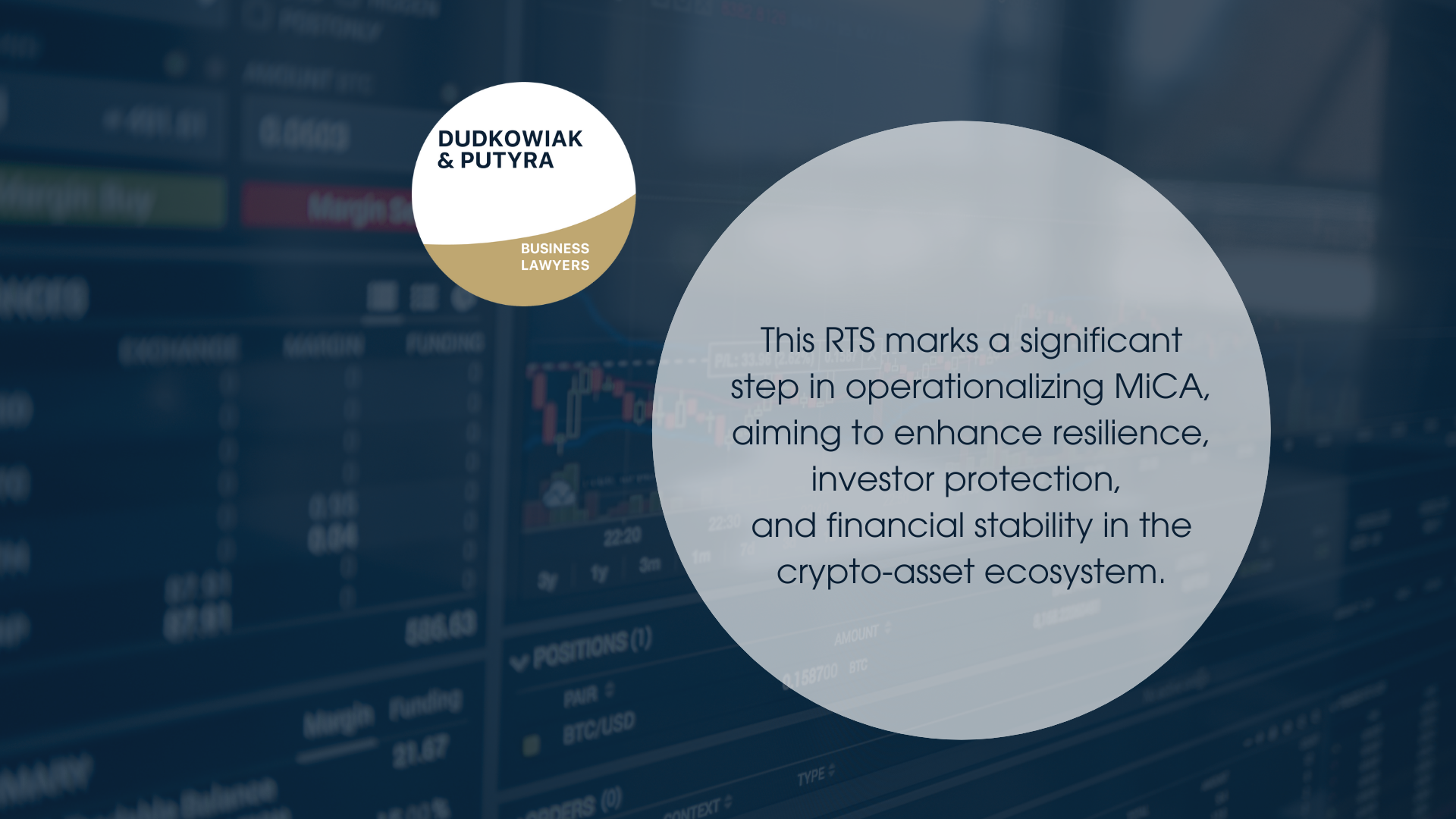New standards for ART and EMT are now in force! Make sure you comply with the requirements
On 24 March 2025, the European Commission published Commission Delegated Regulation (EU) 2025/415, supplementing the Markets in Crypto-Assets Regulation (MiCA – Regulation (EU) 2023/1114). The RTS outlines crucial technical standards concerning own funds requirements and the minimum characteristics of stress testing programs for issuers of asset-referenced tokens (ARTs) and e-money tokens (EMTs).
The new regulatory technical standards (RTS) aim to ensure that issuers maintain sufficient capital buffers proportional to the risks posed by their token issuance activities. They also introduce detailed frameworks for solvency and liquidity stress tests designed to capture both financial and operational risks in extreme but plausible market conditions.

Key highlights:
- Scope: The RTS applies to all ART and EMT issuers, including significant EMT issuers and, if required by competent authorities, non-significant ones.
- Own Funds Requirements: National competent authorities (NCAs) are empowered to impose additional capital requirements on issuers based on individual risk profiles. Issuers must submit a compliance plan within 25 business days if such an adjustment is mandated.
- Stress Testing Programs:
- Solvency stress tests must be performed quarterly for significant issuers and semi-annually for others.
- Liquidity stress tests must be conducted monthly by all ART and EMT issuers.
- Scenarios must reflect realistic adverse conditions, such as mass redemptions, reserve asset devaluation, or cyber incidents.
- Programs must include internal governance procedures, documentation standards, and be reviewed annually.
- Governance and Infrastructure: Senior management and boards must oversee and validate the stress testing frameworks. Issuers must ensure adequate data infrastructure and IT capabilities to support robust and repeatable testing cycles.
- Implementation Timeline: The regulation enters into force 20 days after publication and is directly applicable across all EU Member States.
This RTS marks a significant step in operationalizing MiCA, aiming to enhance resilience, investor protection, and financial stability in the crypto-asset ecosystem.

Full text available here.
Do you have questions about the new RTS requirements? Contact our law firm – we will help you assess the risks and implement the required procedures.


